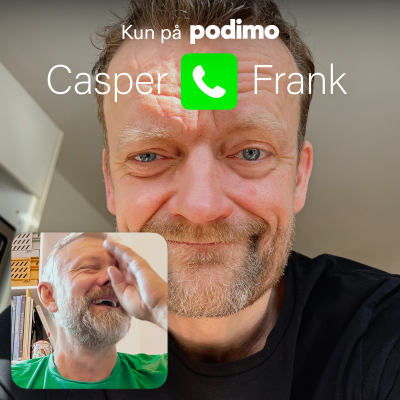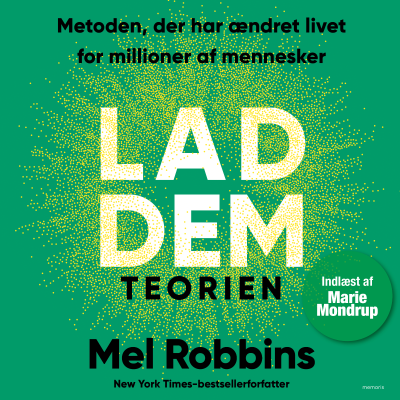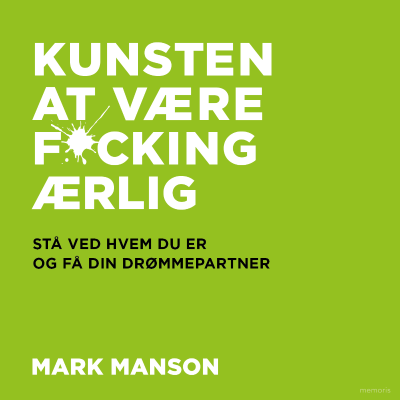
Contractor Growth Network
engelsk
Business
Begrænset tilbud
1 måned kun 9 kr.
Derefter 99 kr. / månedOpsig når som helst.
- 20 lydbogstimer pr. måned
- Podcasts kun på Podimo
- Gratis podcasts
Læs mere Contractor Growth Network
Growing up as the son of a successful contractor, Logan experienced firsthand the benefits of a healthy contracting business: less stress, more money, and more time for family. Now Logan runs Contractor Growth Network to help guide you on your journey to create a strong and reliable contracting business for your family. Interested in learning more? Visit contractorgrowthnetwork.com or join our Facebook group, Common Sense Contracting, today.
Alle episoder
543 episoder#474 Lessons from 30 Years in Residential Architecture (ft. Chris Landis)
Logan sits down with Chris Landis, co-founder of the award-winning Landis Architects/Builders in Washington, D.C. With over 35 years of experience, Chris shares how his architecture background shaped the firm's design-build approach—and what remodelers can learn from their detailed, phased design process. From feasibility studies and pre-construction agreements to hiring in-house designers and scaling team structure, this episode is a masterclass in how to elevate the design side of your remodeling business. Whether you're just starting to charge for design or scaling up to larger, more complex projects, Chris offers clear takeaways on how to structure your process, train your team, and charge what you're worth. 🔑 What You'll Learn * Why Landis' design process includes 3 clear phases: schematic, DD, and CD * How feasibility studies help pre-qualify projects and set expectations * What to look for when hiring designers—and how to train them * How a team leader role bridges sales and design for smoother execution * Why charging properly for design leads to better clients, work, and profits * How Landis keeps clients excited and engaged throughout long design timelines * What it looks like to run a design department that actually makes money ⏱️ Key Timestamps 00:00 – Intro to Chris Landis + Landis Architects & Builders 01:30 – From Wall Street offices to handyman work: how the business started 05:30 – Why drawings matter (and why they should never be free) 11:00 – Overview of Landis' design services: feasibility, pre-construction, full design 15:00 – Three phases of design: schematic, DD, and CD 20:00 – Aligning sales and design with a "team leader" role 27:00 – How Landis prices design and stays ahead on billing 30:00 – In-house vs outsourced design teams: pros and cons 36:00 – Matching designers to project types and geographic regions 38:00 – Keeping clients excited during long design and permitting windows 45:00 – How Landis markets high-end projects (and the power of awards) 47:00 – Design isn't a loss leader—it's a profit center 52:00 – Why charging for design leads to better hires, better clients, and a stronger brand
#473 Improving your Remodeling Sales with Assignment Selling
Logan and Aaron unpack one of the most powerful but underused sales strategies in remodeling: assignment selling. Originally coined by Marcus Sheridan, this method bridges the gap between marketing and sales—by arming prospects with the right information before they ever get on a call. You'll learn how to apply this approach in your own sales process—whether it's sending project walkthroughs before a meeting, using content to pre-qualify leads, or walking clients through your website in real-time. If you've been creating great content but aren't sure how to use it to actually close deals, this episode will show you how. What You'll Learn * What assignment selling is (and isn't) * Why content belongs in your sales process, not just your marketing * How to reduce unqualified leads and shorten the sales cycle * What kinds of content work best at different sales stages * How to personalize resources based on each prospect * The difference between automations vs one-on-one communication * How to ask clients to consume content—without sounding pushy Key Timestamps 00:00 – What is assignment selling (and why does it matter)? 03:00 – Mapping your sales process to identify content gaps 06:30 – The difference between marketing automation and sales enablement 12:30 – Why production quality matters in sales content 18:00 – Examples of content that actually move the sale forward 25:00 – What happens when a prospect doesn't do their assignment 32:00 – Using your website like a live sales deck 37:00 – Emotional buy-in vs logical overload 43:00 – How to map your process and assign content that supports it 48:00 – How CGN uses this strategy in their own sales calls
#472 Top-of-Funnel Marketing: Truck Wraps, Social Media, and More
In this episode of the Contractor Growth Network podcast, Logan and Aaron break down what it takes to build a memorable, recognizable remodeling brand in your community—before prospects are even ready to hire. From truck wraps to social media ads, they walk through the most common "top of funnel" marketing strategies, explain when to use them, and how to measure impact over time. If your goal is to become the remodeler people think of first, this episode is your blueprint. Key Topics: * Understanding the marketing funnel and where branding fits * Truck wraps, yard signs, and how they signal trust * Why remodelers should use social media—even without going viral * The new way Meta ads work (and why they're easier than ever) * The role of email marketing in nurturing leads * Direct mail that doesn't feel like junk * Trade shows, magazine ads, and when (and when not) to use them * How to measure success when ROI isn't immediate 🎯 Timestamps: 00:00 — Why household-name remodelers dominate neighborhoods 04:00 — Who "top of funnel" marketing is really for 10:00 — Truck wraps, yard signs, and company shirts as branding tools 23:20 — Using social media effectively (paid and organic) 30:00 — How to turn high-performing posts into local ads 40:00 — Building and nurturing your email list 49:55 — Direct mail: how to make it worth the cost 54:58 — Trade shows and community event sponsorships 57:21 — Billboards, magazine ads, and long-term brand recall 01:00:46 — Tracking top-of-funnel performance through branded searches
#471 Getting Found in the AI Era
In this episode of the Contractor Growth Network podcast, Logan and Aaron break down how artificial intelligence (AI) is changing the way homeowners search for remodelers—and what you need to do to keep getting found. With tools like ChatGPT, Gemini, and Google's AI Overviews shifting how search results are delivered, contractors who rely on organic leads can't afford to sit this out. From local SEO to AI-friendly website structure, Logan shares what's working right now (October 2025) and how remodelers can prepare for a future where search engines are smarter—and less likely to send users to your site by default. If you've heard phrases like "zero-click search" or "retrieval augmented generation" and don't know how they affect your marketing, this is the episode to listen to. Free Webinar Link: Logan is hosting a free live webinar on November 6, 2025 at 2:00 PM EST to go even deeper on this topic—with tactical examples and live Q&A. 👉 [Register here] https://www.contractorgrowthnetwork.com/google-ai-remodeler/ Can't make it live? Use the same link to access the replay after the event. 🔑 Key Takeaways The Game Is Changing—But Not Gone → Google still dominates local search (AI Overviews only show in ~6% of local searches). → Organic SEO is still king—but AI is adding new rules to the playbook. AI Search Works Differently Than Google Search → Tools like Gemini and ChatGPT don't just scan top search results—they combine multiple searches and synthesize answers. → If you're not in the top 10 organic results, you may be invisible in AI search. SEO Fundamentals Still Matter → Clear website structure, fast load times, keyword strategy, and quality content are still foundational. → Blogs and project pages should be conversational and answer real homeowner questions. Citations and Consistency Are More Important Than Ever → The more places your business info appears (and matches), the more credible you seem to AI and Google. → Directory listings, Houzz profiles, YouTube videos, and local backlinks all help. Get Found Where the AI Is Looking → It's not just about your website anymore—YouTube, Google Business, Instagram, and even Houzz or Angie listings can all feed AI. → Quality, relevance, and proof-based content wins in every search format. 🧠 Memorable Quotes "If you're not in the top 10 organic search results, you're not getting found by AI search tools." "Google wants to keep people on Google. So if your site doesn't offer a better experience, they won't send users to you." "AI search isn't about clever hacks—it's about clarity, credibility, and being everywhere your ideal client is." ✅ Action Steps * Check your Google Business Profile for accuracy and reviews * Reformat your blogs to include question-based headers (AI scans better this way) * Get listed on trusted directories like Houzz, Yelp, and local chambers * Structure your site to make important pages 1–2 clicks from the homepage * Continue investing in SEO—the top 10 spots matter more than ever
#470 What Your Website Is Actually Meant to Do
Most remodelers see their website as a brochure—but it should act like a salesperson. In this episode, Logan and Aaron explain how your site can guide homeowners through the same trust-building process as an in-person consultation. From project storytelling and emotional connection to page flow and calls-to-action, they break down what turns casual browsers into high-quality leads—and how to future-proof your site for the coming era of AI search. Timestamps 00:00 Why your website matters – It's not just "online presence," it's your digital salesperson. 03:29 Traffic vs. conversion – Why more visitors don't fix a bad website. 04:45 What homeowners really want – Proof, price, process, and trust. 09:59 Sell excitement, not necessity – Remodeling is emotional, not logical. 13:18 How to self-assess – Does your site answer the right homeowner questions? 19:33 Story-driven websites – Turning photos into HGTV-style transformations. 26:56 The feature project page – How storytelling doubles engagement. 45:16 Beyond project pages – Why process and service pages build trust and SEO. 52:42 Preparing for AI search – Structuring your site so future tools can read and recommend it.
Vælg dit abonnement
Begrænset tilbud
Premium
20 timers lydbøger
Podcasts kun på Podimo
Gratis podcasts
Opsig når som helst
1 måned kun 9 kr.
Derefter 99 kr. / måned
Premium Plus
100 timers lydbøger
Podcasts kun på Podimo
Gratis podcasts
Opsig når som helst
Prøv gratis i 7 dage
Derefter 129 kr. / month
1 måned kun 9 kr. Derefter 99 kr. / måned. Opsig når som helst.

































